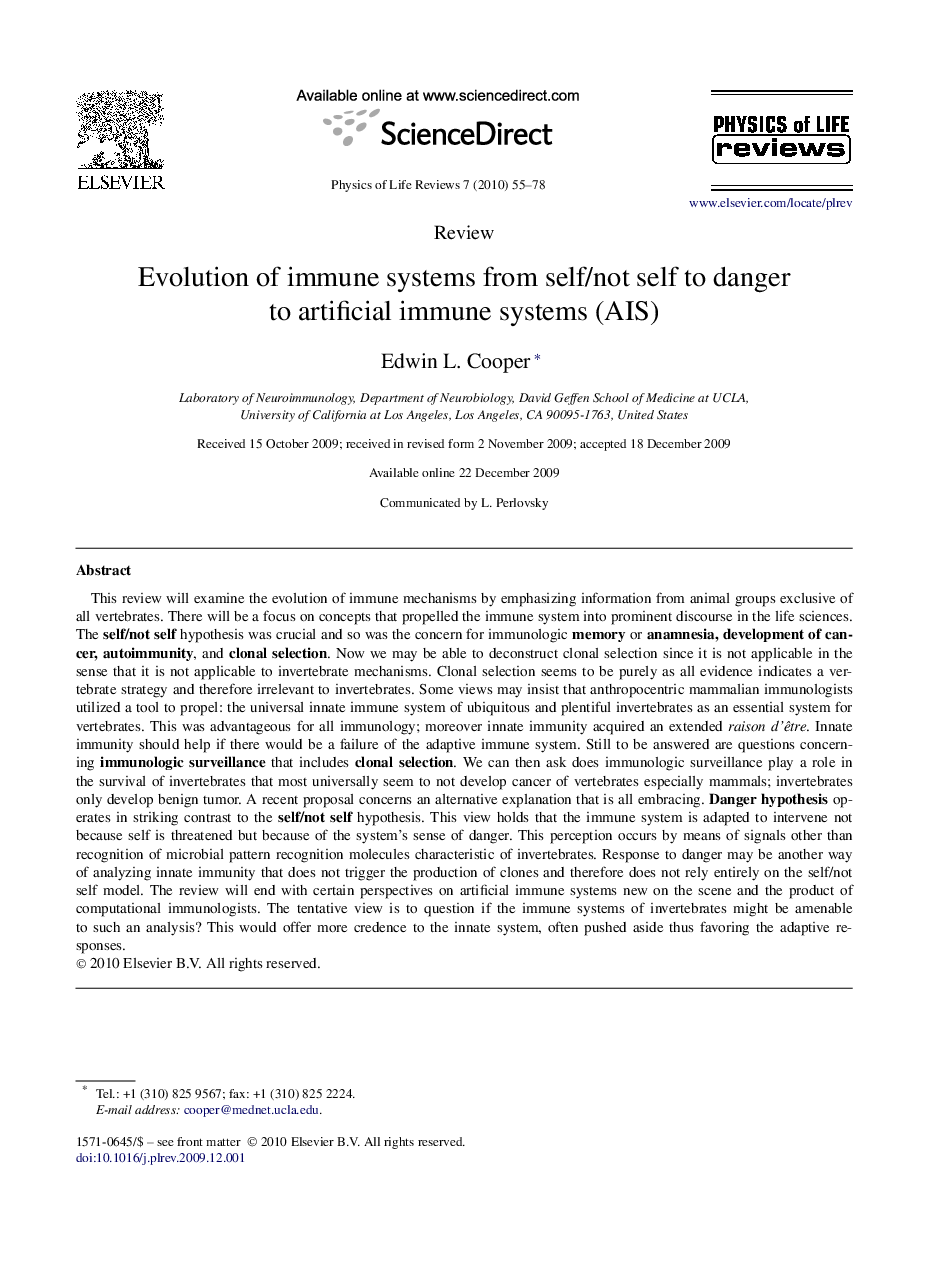| Article ID | Journal | Published Year | Pages | File Type |
|---|---|---|---|---|
| 1869886 | Physics of Life Reviews | 2010 | 24 Pages |
This review will examine the evolution of immune mechanisms by emphasizing information from animal groups exclusive of all vertebrates. There will be a focus on concepts that propelled the immune system into prominent discourse in the life sciences. The self/not self hypothesis was crucial and so was the concern for immunologic memory or anamnesia, development of cancer, autoimmunity, and clonal selection. Now we may be able to deconstruct clonal selection since it is not applicable in the sense that it is not applicable to invertebrate mechanisms. Clonal selection seems to be purely as all evidence indicates a vertebrate strategy and therefore irrelevant to invertebrates. Some views may insist that anthropocentric mammalian immunologists utilized a tool to propel: the universal innate immune system of ubiquitous and plentiful invertebrates as an essential system for vertebrates. This was advantageous for all immunology; moreover innate immunity acquired an extended raison d'être. Innate immunity should help if there would be a failure of the adaptive immune system. Still to be answered are questions concerning immunologic surveillance that includes clonal selection. We can then ask does immunologic surveillance play a role in the survival of invertebrates that most universally seem to not develop cancer of vertebrates especially mammals; invertebrates only develop benign tumor. A recent proposal concerns an alternative explanation that is all embracing. Danger hypothesis operates in striking contrast to the self/not self hypothesis. This view holds that the immune system is adapted to intervene not because self is threatened but because of the system's sense of danger. This perception occurs by means of signals other than recognition of microbial pattern recognition molecules characteristic of invertebrates. Response to danger may be another way of analyzing innate immunity that does not trigger the production of clones and therefore does not rely entirely on the self/not self model. The review will end with certain perspectives on artificial immune systems new on the scene and the product of computational immunologists. The tentative view is to question if the immune systems of invertebrates might be amenable to such an analysis? This would offer more credence to the innate system, often pushed aside thus favoring the adaptive responses.
